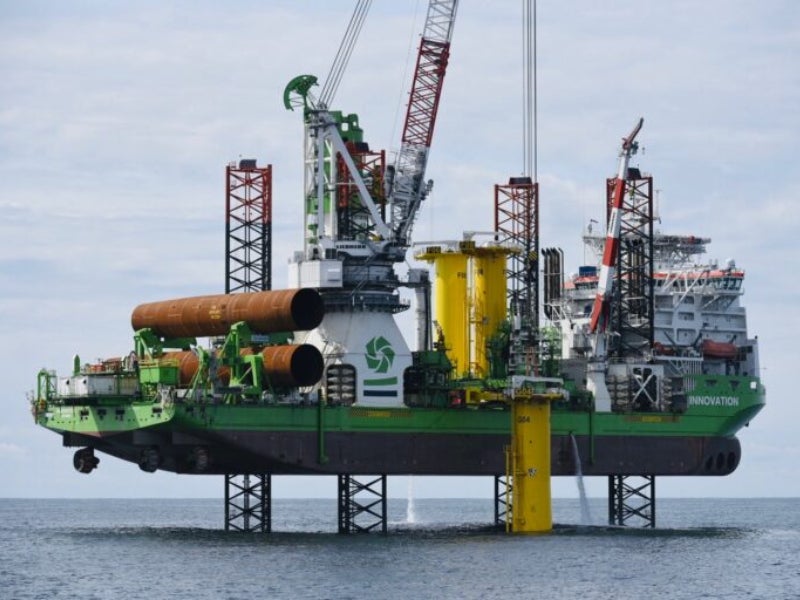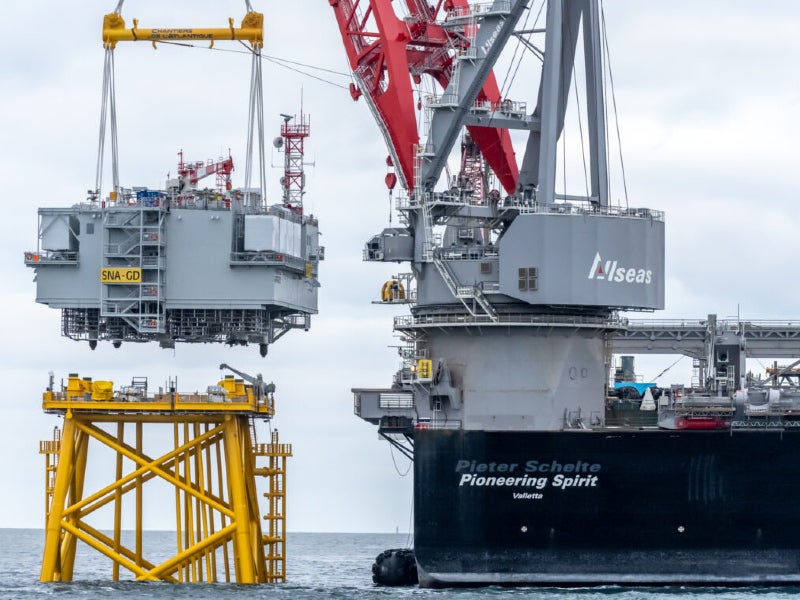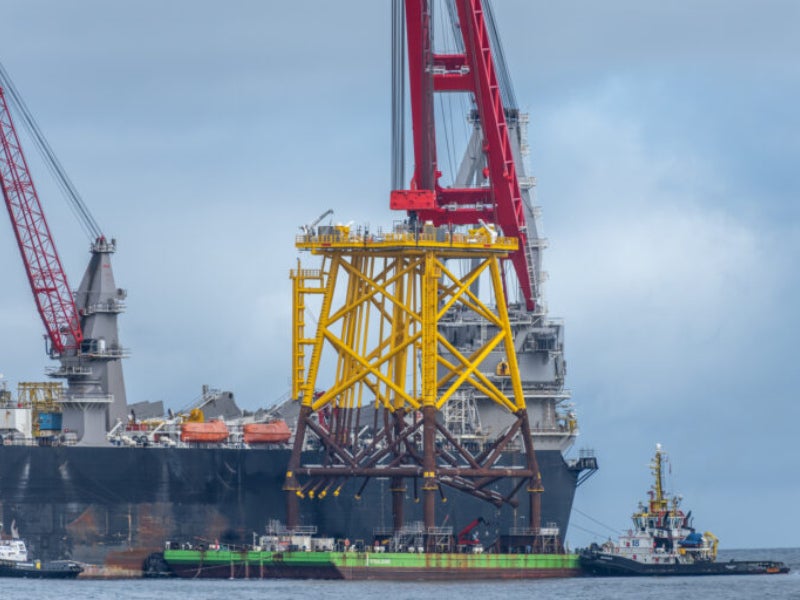Saint Nazaire is a 480MW offshore wind farm being located in the Loire-Atlantique region of France. Owned by Parc du Banc de Guérande, it is the country’s first commercial-scale offshore wind farm.
Parc du Banc de Guérande is a subsidiary of Eolien Maritime France (EMF), a joint venture between EDF Renewables and EIH SARL, which is jointly owned by Enbridge and Canada Pension Plan Investment Board (CPP Investments).
EMF won the competitive bidding for the project in 2012 from the French Government, while the operating permit was received in August 2016. The final administrative permit to operate the wind farm was granted in June 2019.
Construction works on the project started in September 2019, with the first turbine erected in April 2022. The wind farm became fully operational with all 80 turbines in November 2022.
The €2bn ($2.21bn) project was developed as part of the government’s aim to increase renewable energy’s share in consumption to 32% by 2030. KfW IPEX-Bank contributed €100m ($111.6m) for the development of the wind project.
Apart from the Saint Nazaire project, EMF is developing three other wind farms in France, namely Dunkirk, Fecamp and Courseulles, which will have a combined capacity of 1.42GW.
Saint Nazaire wind farm location and site details
The Saint Nazaire wind farm is situated on the bench of Guérande, approximately 12km from the coastline.
The site was selected due to strong and steady winds, as well as shallow water depth. It also did not have constraints, such as regulatory easements and maritime safety, and was located away from major commercial shipping routes.
Saint Nazaire wind farm make-up
The Saint Nazaire offshore wind farm is equipped with GE’s 80 Haliade 150-6MW wind turbines.
The Haliade 150-6MW wind turbine has a rotor diameter of 150m and swept area of 17,860m². The rotor of the turbine is fitted with blades stretching 73.50m.
Located approximately 12km to 20km offshore, the wind turbines are installed 1km apart on monopole foundations. Each turbine features a Pure Torque design and direct drive permanent magnet generator for enhanced efficiency.
Construction details
GE Renewable Energy manufactured the first turbine nacelle, integrated with the generator, for the wind farm in September 2020. The nacelle was the first in a series of Haliade 150-6 MW wind turbines.
The first foundation for the wind farm was installed off the Guérande peninsula, using DEME’s Innovation vessel, in May 2021. The foundations were transported from the port of La Rochelle.
Each foundation includes a monopile structure and transition piece. The monopiles were installed in the seabed at water depths between 12m and 25m, while the transition pieces on top of them were equipped with maritime signal lights for safety.
The excavation of 73 monopile foundations with 7,700mm was performed at water depths between 6m and 24m, using the newly developed Herrenknecht offshore foundation drilling (OFD) technology of Herrenknecht AG to install large-diameter monopiles for wind turbines, in June 2021.
In August 2021, the Pioneering Spirit vessel was used to install the jacket for the electrical offshore substation 12km away from the coast. The offshore substation was installed on the jacket in the same month, and 19 wind turbine foundations were also installed at the same time.
Power transmission and off-take details
The electricity generated by the wind farm is transmitted through a 33km submarine link and 27km underground link to Saint-Nazaire Trignac, Montoir-de-Bretagne, Donges and Prinquiau. A substation in Prinquiau was also constructed.
The 2,100t electrical offshore substation manufactured for the project by GE Renewable Energy’s Grid Solutions’ AC Systems division is integrated with high and medium voltage systems.
The systems include five 220kV gas-insulated switchgears (GIS) supplied by French company Aix-les-Bains, two 220/33kV transformers manufactured by German company Monchengladbach, two SCADA systems developed in Montpellier, one 33kV GIS and a telecommunications system.
The power generated from the offshore wind farm is evacuated to the national grid, operated by Réseau de Transport d’Électricité (RTE), which was responsible for the construction of the transmission infrastructure.
Saint Nazaire maintenance base details
The port of La Turballe was selected as the base port for operation and maintenance activities of the project. The site features a control room and telecommunication office, changing rooms, and a storage warehouse.
The maintenance building is located just before the shroud area and has a surface of 1,250m². The base was inaugurated by EDF in October 2021.
One 25m-long and two 30m-long vessels are moored on three pontoons along the Spanish wharf of the port. The vessels are used to transfer 12 maintenance technicians to the project site daily.
Contractors involved
COWI was awarded the contract for the detailed design of the monopile foundations in 2019.
Eiffage Metal received a €500m ($559.5m) contract from EDF Renouvelables and Enbridge to design, manufacture and install 80 monopile steel foundations for the offshore wind farm in August 2019. Eiffage Metal subcontracted Sif Group to manufacture the foundations.
Jan De Nul Group was responsible for installing the wind turbines on the monopile foundations.
Brunel was contracted to provide high voltage control engineering, Scada supervision and commissioning services for the wind turbine generators, foundations and inter-array grid of the project.
The electrical substation for the project was constructed by a consortium of Atlantique Offshore Energy, GE Grid Solutions and DEME Group’s French subsidiary SDI. The transportation and installation of the offshore substation were carried out by DEME Offshore.
SPIE constructed the test bench in Saint-Nazaire to check the operations of the offshore wind farm’s turbines before installation. GE Renewable Energy signed a contract with ACTA MARINE to charter the ACTA AURIGA service operation vessel for the project’s commissioning activities.
Consulting firms, including Quiet Ocean, Sinay and Biotope, were involved in environmental monitoring for the project, while Fugro was involved in conducting geotechnical surveys.






